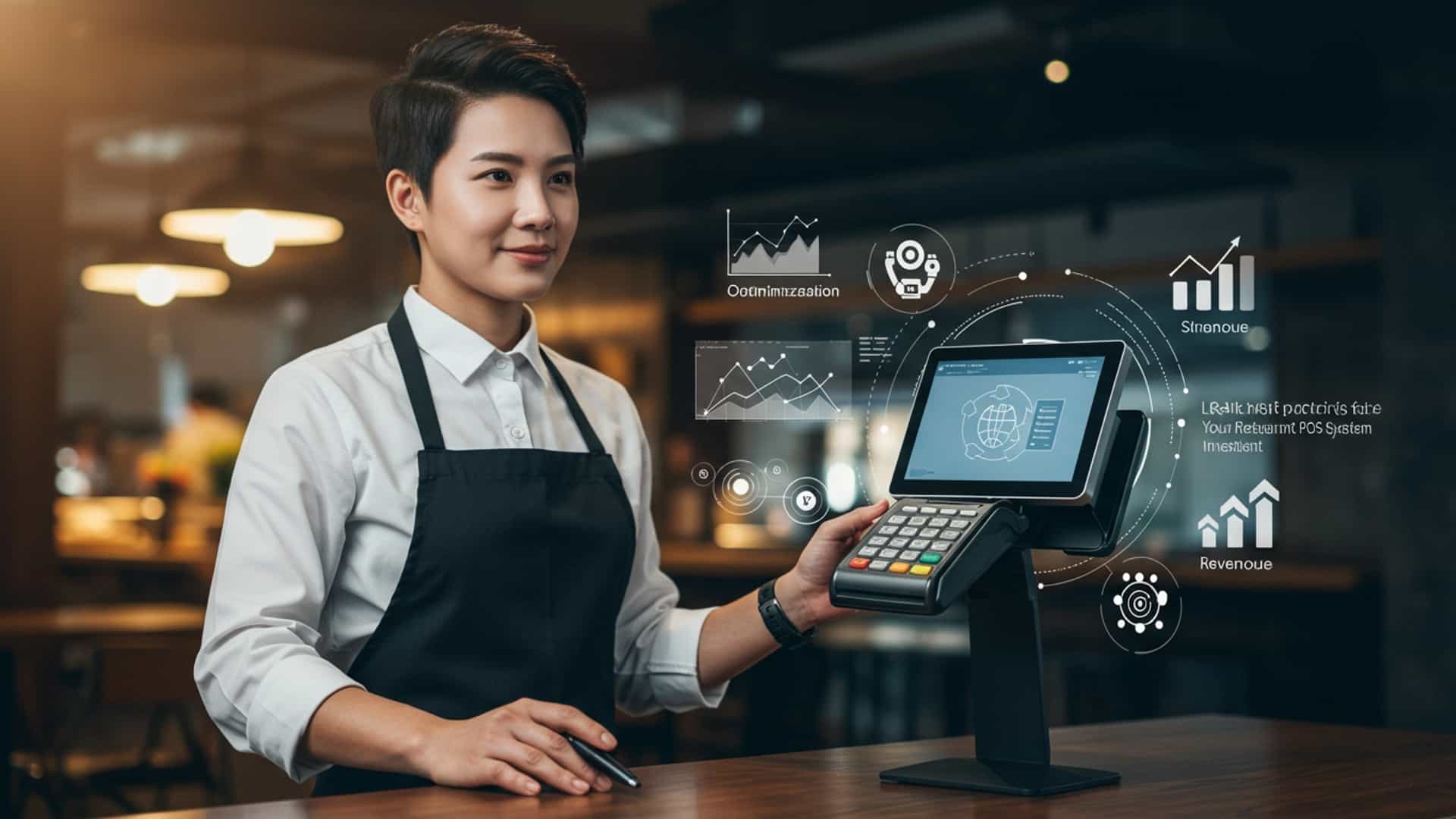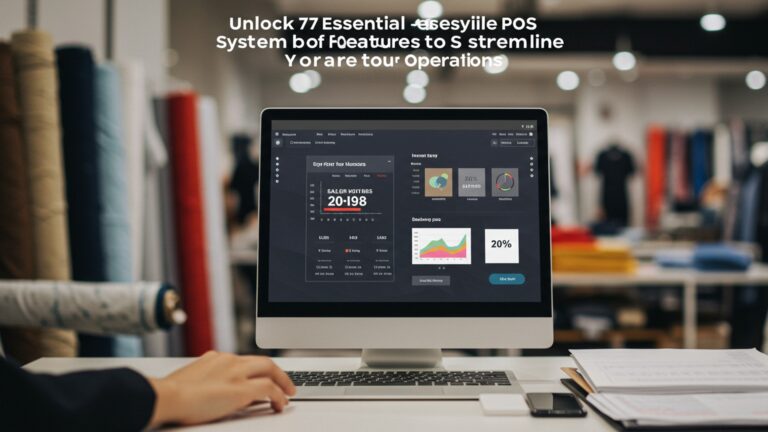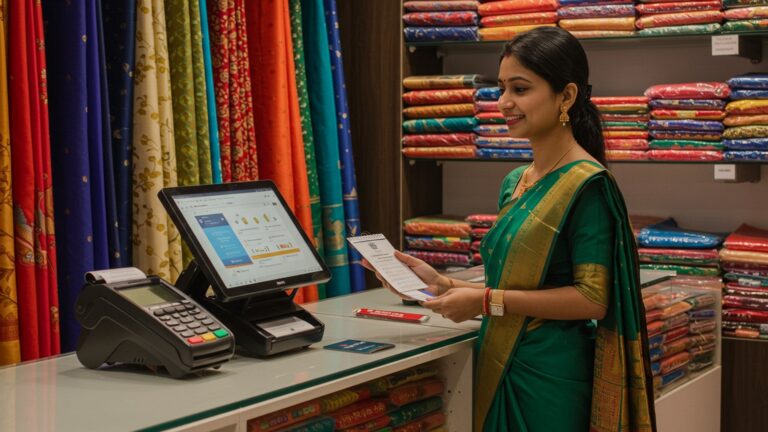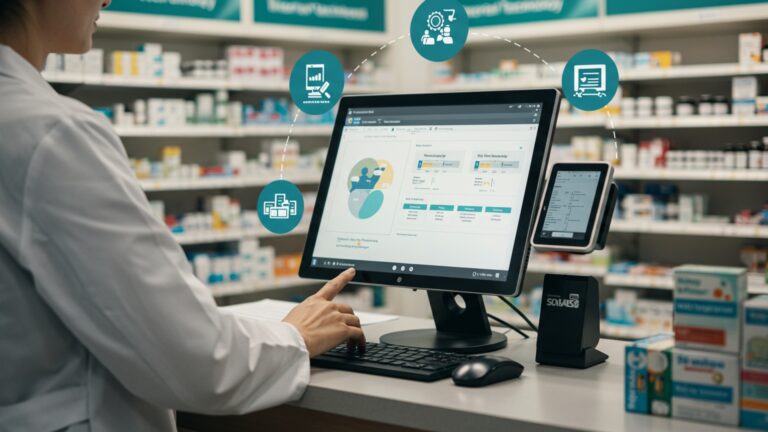Learn 8 Best Practices for Maximizing Your Restaurant POS System Investment Today
The modern restaurant industry has rapidly transformed, elevating restaurant POS software from a simple transaction processor to the core operational nervous system. Many establishments, But, only tap into a fraction of their robust system’s potential, overlooking features that could dramatically impact profitability and efficiency. Contemporary cloud-based POS platforms now offer advanced capabilities like AI-driven inventory management to predict demand, integrated online ordering with third-party delivery synchronization. real-time labor optimization based on sales data. Leveraging these sophisticated tools beyond basic order taking and payment processing is crucial for turning a significant investment into a powerful strategic advantage that enhances customer experience and streamlines backend operations in today’s competitive market.

Understanding Your Restaurant POS Software Investment
In today’s fast-paced culinary world, a robust Restaurant POS software is more than just a tool for processing transactions; it’s the central nervous system of your operation. A Point of Sale (POS) system integrates various aspects of restaurant management, from order taking and payment processing to inventory control, staff management. customer relationship management (CRM). When chosen wisely and utilized effectively, this sophisticated software can significantly boost efficiency, reduce costs. enhance the customer experience, ultimately maximizing your return on investment. But merely having a system isn’t enough; unlocking its full potential requires strategic implementation and ongoing commitment. Let’s delve into eight best practices that will help you transform your Restaurant POS software from a simple expense into a powerful engine for growth.
1. Prioritize Comprehensive Staff Training
The most advanced Restaurant POS software is only as effective as the people operating it. Inadequate training leads to slow service, errors, frustration. underutilization of key features. Investing in thorough, ongoing training for all staff members—from front-of-house servers and bartenders to kitchen staff and managers—is paramount. This isn’t a one-time event but a continuous process that adapts to new features and staff changes.
- Structured Onboarding
- Role-Specific Training
- Hands-On Practice
- Ongoing Education
Develop a step-by-step training manual or digital guide for new hires, covering everything from basic order entry to handling complex transactions and returns.
Tailor training modules to different roles. A server needs to master table management and modifiers, while a manager focuses on reporting, inventory. staff scheduling features.
Provide a sandbox or training mode within your Restaurant POS software where staff can practice without affecting live operations. This builds confidence and familiarity.
Schedule regular refresher sessions, especially when new software updates are rolled out or when performance metrics highlight common errors.
Real-world application: A local bistro found that after implementing a comprehensive, scenario-based training program for their new Restaurant POS software, their average order processing time decreased by 15%. order accuracy improved by 20%, directly impacting customer satisfaction and table turnover.
2. Leverage Data Analytics and Reporting Capabilities
One of the most powerful features of modern Restaurant POS software is its ability to collect and examine vast amounts of operational data. This data is a goldmine for informed decision-making, offering insights into sales trends, peak hours, popular menu items, staff performance. inventory movement. Ignoring these reports is akin to driving blind.
- Sales Performance
- Inventory Management
- Labor Costs
- Customer Insights
review daily, weekly. monthly sales reports to identify top-selling items, slow movers. peak revenue periods. This can inform menu engineering and staffing levels.
Use inventory reports to track ingredient consumption, identify waste. optimize ordering processes to reduce spoilage and carrying costs.
Monitor labor costs against sales data to ensure optimal staffing and schedule efficiency, minimizing unnecessary overtime.
If your Restaurant POS software includes CRM features, assess purchase history to identify loyal customers, popular items among specific demographics. opportunities for personalized marketing.
Actionable takeaway: Regularly set aside time, perhaps weekly, to review key performance indicators (KPIs) generated by your Restaurant POS software. Look for patterns, anomalies. opportunities to refine your operations, from pricing strategies to promotional campaigns.
3. Seamless Integration with Other Systems
A standalone Restaurant POS software system, while functional, often falls short of its full potential. The true power emerges when it integrates seamlessly with other critical restaurant management tools. This creates a unified ecosystem, eliminating manual data entry, reducing errors. providing a holistic view of your business.
- Inventory Management Systems
- Accounting Software
- Online Ordering Platforms
- Loyalty Programs & CRM
- Employee Scheduling Software
Automatic deduction of ingredients from stock as dishes are sold, triggering reorder alerts.
Direct export of sales data, payment data. labor costs to platforms like QuickBooks or Xero, streamlining bookkeeping and financial reporting.
Orders placed online or through third-party delivery apps flow directly into your POS, simplifying kitchen operations and order fulfillment.
Customer purchase history and loyalty points are automatically tracked, enabling personalized marketing and rewards.
Integration can help manage shifts, track clock-ins/outs. calculate payroll more accurately.
Consider the benefits of an integrated approach versus a fragmented one:
| Feature | Integrated Restaurant POS Software | Fragmented Systems |
|---|---|---|
| Data Sync | Automatic & Real-time | Manual & Prone to Error |
| Operational Efficiency | High (Streamlined Workflows) | Low (Redundant Tasks) |
| Data Accuracy | High (Single Source of Truth) | Medium to Low (Discrepancies) |
| Reporting | Comprehensive & Holistic | Siloed & Incomplete |
| Cost Savings | Reduced Labor, Less Waste | Potential Hidden Costs (Errors, Time) |
4. Embrace Regular Software Updates and Upgrades
Restaurant POS software is a dynamic tool, constantly evolving with new features, security enhancements. bug fixes. Neglecting updates means missing out on crucial improvements that can enhance performance, protect your data. introduce functionalities that boost efficiency or customer experience.
- Stay Informed
- Schedule Updates Strategically
- interpret New Features
- Security Patches
Regularly check your vendor’s communications for announcements about new releases, patches. feature additions.
Plan updates during off-peak hours to minimize disruption to your operations.
Don’t just update; take the time to learn and implement new features. Many updates include functionalities that can directly address operational pain points or open new revenue streams.
Updates often include critical security patches that protect your system from vulnerabilities and ensure PCI compliance, safeguarding sensitive customer data.
Expert tip: Many cloud-based Restaurant POS software solutions offer automatic updates, simplifying this process. For on-premise systems, ensure you have a clear plan and designated staff member responsible for managing updates.
5. Customize Your System to Fit Your Workflow
While out-of-the-box Restaurant POS software offers a foundational set of features, its true power often lies in its flexibility to be customized to your restaurant’s unique workflow and needs. A “one-size-fits-all” approach rarely maximizes efficiency.
- Menu Customization
- User Permissions
- Reporting Customization
- Payment Options
- Layout and Interface
Organize your menu items logically with modifiers, combos. special instructions that mirror your kitchen’s operations. This speeds up order entry and reduces errors.
Configure specific access levels for different staff roles. Servers might only access order entry, while managers have full access to reports and settings. This enhances security and prevents unauthorized actions.
Tailor reports to display the metrics most relevant to your business goals, allowing for more focused analysis.
Configure your system to accept all relevant payment types, including credit cards, mobile payments, gift cards. even split payments, catering to customer preferences.
Some systems allow for customization of the user interface, placing frequently used buttons in prominent positions to optimize workflow speed.
Example: A multi-location coffee shop chain configured their Restaurant POS software to include specific buttons for “extra shot,” “almond milk,” and “decaf” directly on the main coffee ordering screen, significantly cutting down on the time it took baristas to enter custom orders.
6. Leverage Customer Relationship Management (CRM) Features
Modern Restaurant POS software often comes equipped with powerful CRM functionalities designed to help you comprehend and engage with your customer base. This goes beyond basic transaction processing, fostering loyalty and driving repeat business.
- Loyalty Programs
- Customer Profiles
- Targeted Marketing
- Feedback Collection
Implement points-based systems, tiered rewards, or special discounts for returning customers. Your POS can track purchases and automatically apply rewards.
Build a database of customer data, including purchase history, preferences. contact details (with their consent). This allows for personalized marketing efforts.
Use insights from your CRM data to send personalized promotions, birthday offers, or exclusive deals to specific customer segments via email or SMS. For instance, a customer who frequently orders vegetarian dishes could receive promotions for new plant-based menu items.
Some Restaurant POS software can integrate with feedback tools, allowing customers to provide ratings or comments directly, offering valuable insights for service improvement.
Case study: A family restaurant launched a loyalty program through their Restaurant POS software, offering a free dessert after every five visits. They saw a 30% increase in repeat customer visits within six months, directly attributable to the ease of tracking and redemption through the system.
7. Implement Robust Security Best Practices
Your Restaurant POS software handles sensitive data, including customer payment details, sales figures. employee details. Protecting this details is not just about compliance; it’s crucial for maintaining customer trust and avoiding costly data breaches. Security should be a top priority.
- Strong Passwords and User Permissions
- PCI Compliance
- Data Encryption
- Regular Backups
- Network Security
Enforce complex passwords and regularly review user access levels. Ensure employees only have access to the functions necessary for their role.
Ensure your Restaurant POS software and associated payment processors are fully Payment Card Industry Data Security Standard (PCI DSS) compliant. This protects cardholder data.
Verify that sensitive data, both in transit and at rest, is encrypted.
Implement a routine for backing up all POS data. For cloud-based systems, this is often handled automatically. for on-premise solutions, it’s a critical manual step.
Secure your restaurant’s Wi-Fi network with strong passwords and consider segmenting your network to isolate POS terminals from public Wi-Fi.
// Example of a strong password policy guideline
Minimum 12 characters
Include uppercase letters
Include lowercase letters
Include numbers
Include special characters (e. g. , ! , @, #, $)
Avoid common words or personal data
8. Proactive Maintenance and Vendor Support
Even the most reliable Restaurant POS software can encounter issues. Proactive maintenance and a strong relationship with your vendor’s support team are crucial for minimizing downtime and ensuring smooth operations.
- Regular System Checks
- Software Health Monitoring
- grasp Your Support Contract
- Provide Feedback
Periodically check hardware components (printers, card readers) and network connectivity. Clean terminals and peripherals to prevent dust buildup.
Keep an eye on system performance. Slowdowns or frequent crashes can indicate underlying issues that need addressing.
Familiarize yourself with your vendor’s support hours, response times. escalation procedures. Know how to contact them for urgent issues.
Share your experiences and suggestions with your Restaurant POS software vendor. Your feedback can contribute to future improvements and help tailor the system more closely to your needs.
Actionable tip: Designate a primary contact person within your restaurant who is responsible for communicating with the POS vendor. This ensures consistent communication and faster resolution of issues. This individual should be well-versed in the system’s operation and able to clearly articulate any problems encountered.
Conclusion
Ultimately, maximizing your restaurant POS system isn’t about mere transactions; it’s about transforming it into the operational backbone of your business. My personal tip? Consistently dive into the analytics – don’t just skim. For instance, understanding peak hour sales trends or popular menu item combinations through your POS data can directly inform staffing decisions or even menu engineering, a strategy I’ve seen boost margins significantly by optimizing what you offer when it’s most wanted. The rapid evolution of POS technology, with features like integrated online ordering or real-time inventory updates becoming standard, means ongoing staff training isn’t optional, it’s crucial. I’ve witnessed how a well-trained team fully utilizing features, from loyalty programs to kitchen display systems, can dramatically reduce errors and enhance guest satisfaction across the board. It’s about adapting to new capabilities, not just adopting the system. Embrace these best practices. you’ll not only see a significant return on your initial investment but also unlock new efficiencies and growth opportunities, propelling your restaurant into a future of streamlined operations and delighted customers. Your POS is a powerful partner; empower it. it will empower your success.
More Articles
Unlock 8 Practical Strategies to Maximize Your Restaurant POS Software
How to Choose the Best Restaurant POS Software for Your Business
5 Smart Strategies to Optimize Your Restaurant with POS Technology
A Guide to Mastering Restaurant POS for Seamless Operations
6 Common Restaurant POS Software Mistakes and How to Avoid Them
FAQs
Why is it such a big deal to properly train my staff on the POS system?
Good training is crucial because it helps your team use the system efficiently, reduces errors, speeds up service. ultimately makes your customers happier. Plus, a well-trained staff can really tap into all the features your POS offers, making your investment pay off.
What are some key ways to know if I’m really getting the most out of my POS system investment?
You’re maximizing it when you’re actively using its reporting tools to make smarter decisions about inventory, sales trends. staffing. Also, if it’s helping streamline operations, reduce waste, improve order accuracy. enhance customer service, you’re definitely on the right track.
Do I really need to keep up with all those software updates for my POS? They seem like a hassle.
Absolutely! Regular updates aren’t just about new features; they often include crucial security patches, bug fixes. performance improvements. Staying updated protects your data, keeps your system running smoothly. ensures you’re always getting the latest functionalities and efficiencies.
My inventory always feels like a mess. How can the POS system actually help me get a handle on it?
Your POS can be a game-changer for inventory! It helps you track ingredients as they’re sold, set reorder points, identify popular or slow-moving items. even flag potential waste. This leads to less food waste, more accurate stock counts. better cost control.
Beyond just taking orders, how can my POS system actually make customers happier?
It can do a lot! By integrating with loyalty programs, storing customer preferences. speeding up order processing, your POS helps create a smoother, more personalized experience. It also enables quick and accurate split checks or special requests, reducing wait times and improving satisfaction.
Is the data from my POS system genuinely useful for making business decisions?
Definitely! That data is gold. It can show you peak sales times, best-selling dishes, server performance. even customer spending habits. Analyzing this helps you optimize staffing, refine your menu, run targeted promotions. ultimately boost your bottom line with informed choices.
Should I bother linking my POS with other restaurant tech, like online ordering or kitchen screens?
For sure! Integrating your POS with other systems like online ordering platforms, kitchen display systems (KDS), or loyalty programs creates a seamless workflow. This reduces manual entry errors, speeds up service. gives you a unified view of your operations, making everything more efficient and less prone to mistakes.






